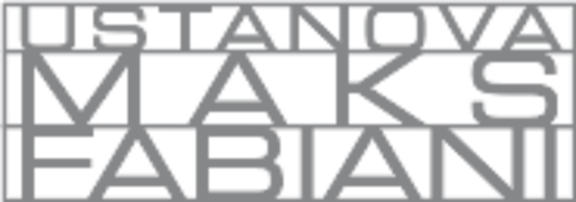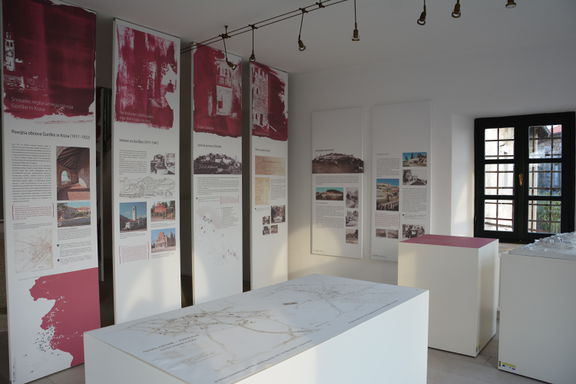Difference between revisions of "Maks Fabiani Foundation"
Anže Zorman (talk | contribs) |
Anže Zorman (talk | contribs) |
||
| Line 24: | Line 24: | ||
{{Teaser| | {{Teaser| | ||
| − | The [[Maks Fabiani Foundation]] was founded in [[established::1999]] with the aim to support and further the research on the work of the architect and urban planner [[Maks Fabiani]] (1865–1962). Its main activities thus include book publishing, expert consulting, and, most importantly, maintaining and developing the archive of Fabiani's work and heritage. Though the latter is thought by many to be one of the most important architects of ''Mitteleuropa'' in his time, comprehensive documentation has been only modestly preserved due to the destruction wrought by the Second World War. | + | The [[Maks Fabiani Foundation]] was founded in [[established::1999]] with the aim to support and further the research on the work of the architect and urban planner [[Maks Fabiani]] (1865–1962). Its main activities thus include book publishing, expert consulting, and, most importantly, maintaining and developing the archive of Fabiani's work and heritage. Though the latter is thought by many to be one of the most important architects of ''Mitteleuropa'' in his time, comprehensive documentation of his work has been only modestly preserved due to the destruction wrought by the Second World War. |
His architectural signature style was secession and historicism tinged modernism, which he – together with his urbanistic proposals – imprinted into the urban landscape of numerous European cities, most notably in Vienna, Trieste and Ljubljana. Still, his work can also be found all over Middle Europe, from Bielsko in Poland and Konopište in the Czech Republic, to the coastal cities of Opatija (Croatia) and Palermo (Italy). | His architectural signature style was secession and historicism tinged modernism, which he – together with his urbanistic proposals – imprinted into the urban landscape of numerous European cities, most notably in Vienna, Trieste and Ljubljana. Still, his work can also be found all over Middle Europe, from Bielsko in Poland and Konopište in the Czech Republic, to the coastal cities of Opatija (Croatia) and Palermo (Italy). | ||
| Line 30: | Line 30: | ||
Today the archive is housed at the [[Centre for Karst Architecture]] in the renovated [[Lojze Spacal Gallery and the Karst House, Štanjel|Štanjel castle]], which is a Fabiani's creation as well. As he was a renaissance type of a man, being also a town planner, an arts historian, a speculative engineer and a painter, philosopher, poet and fiction writer, this archive holds a very varied collection. | Today the archive is housed at the [[Centre for Karst Architecture]] in the renovated [[Lojze Spacal Gallery and the Karst House, Štanjel|Štanjel castle]], which is a Fabiani's creation as well. As he was a renaissance type of a man, being also a town planner, an arts historian, a speculative engineer and a painter, philosopher, poet and fiction writer, this archive holds a very varied collection. | ||
| + | |||
| + | ==Background== | ||
| + | |||
| + | The idea for the foundation was formed while the architect and art historian Marko Pozzetto (1925–2006) was writing his book ''Maks Fabiani - Vizije prostora'' [Max Fabiani - Visions of Space], which was published in 1997. Pozzetto has been working on Fabiani for 35 years, during which he has been actively collecting and categorizing relevant documentation and other materials. Upon its founding, he contributed these to the foundation. | ||
| + | |||
| + | This archive is stationed at the renovated Štanjel castle and in 2010, it became a part of the [[Centre for Karst Architecture]]. | ||
==See also== | ==See also== | ||
Revision as of 07:05, 20 October 2015
-
6 Mar 2015
Trgovski dom izložba mesta, a permanent exhibition commemorating the 150th anniversary of the birth of Maks Fabiani conceived by Nataša Kolenc and produced in cooperation with the Maks Fabiani Foundation,
Today the archive is housed at the Centre for Karst Architecture in the renovated Štanjel castle, which is a Fabiani's creation as well. As he was a renaissance type of a man, being also a town planner, an arts historian, a speculative engineer and a painter, philosopher, poet and fiction writer, this archive holds a very varied collection.
Background
The idea for the foundation was formed while the architect and art historian Marko Pozzetto (1925–2006) was writing his book Maks Fabiani - Vizije prostora [Max Fabiani - Visions of Space], which was published in 1997. Pozzetto has been working on Fabiani for 35 years, during which he has been actively collecting and categorizing relevant documentation and other materials. Upon its founding, he contributed these to the foundation.
This archive is stationed at the renovated Štanjel castle and in 2010, it became a part of the Centre for Karst Architecture.
See also
- Centre for Karst Architecture
- Museum of Architecture and Design
- Slovene Association of Urban and Space Planners
- Plečnik Collection
External links
- Maks Fabiani Foundation website (in Slovenian)
- A catalogue of the foundation's archive
- A documentary on Maks Fabiani and Jože Plečnik (in Slovenian)
- An article of Fabiani's engineering projects (in Slovenian)
- Brochure on the CKA and Max Fabiani (PDF) (English, German, Italian)
- The Fabiani Path




